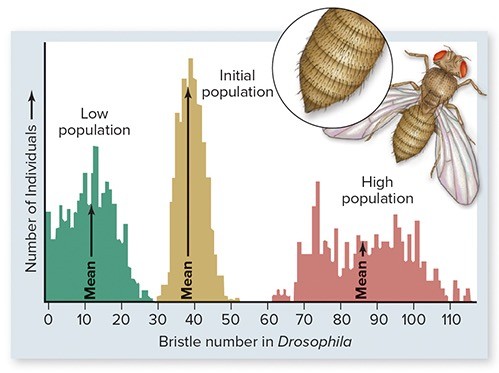In the laboratory, fruit flies (Drosophila) were artificially selected for the number of bristles on their bodies. One population (R) was selected for low numbers of bristles, a second population (S) for high numbers of bristles. After 35 generations (about 1 year's time), the two populations R and S were studied. Researchers found
After 35 generations (about 1 year's time), the two populations R and S were studied. Researchers found
A. a huge increase in S, a huge decrease in R, with no overlap whatsoever.
B. no change was seen; it's much too soon.
C. a vast, overlapping range of bristle numbers was seen.
D. a slight increase in bristles in S, a slight decrease in R, with a little overlap in the middle ranges.
E. some slight increase of bristle numbers was already evident.
Answer: A
You might also like to view...
The glucose molecule has a large quantity of energy in its _____
A) Câ€"H bonds B) Câ€"N bonds C) number of oxygen atoms D) polar structure
The neuron that releases neurotransmitters is known as ________, while the neuron that receives the neurotransmitters is knows as ________
Fill in the blank(s) with correct word
In the stems of plants, where is sugar converted to starch and stored as a food reserve?
A) Mesophyll layer B) Central vascular cylinder C) Parenchyma cells in both the cortex and pith D) Collenchyma associated with xylem cells E) Sclerenchyma
Organic molecules with identical molecular formulas and mirror-image structures are referred to as
A. polymers. B. complements. C. enantiomers. D. double helices. E. isotopes.